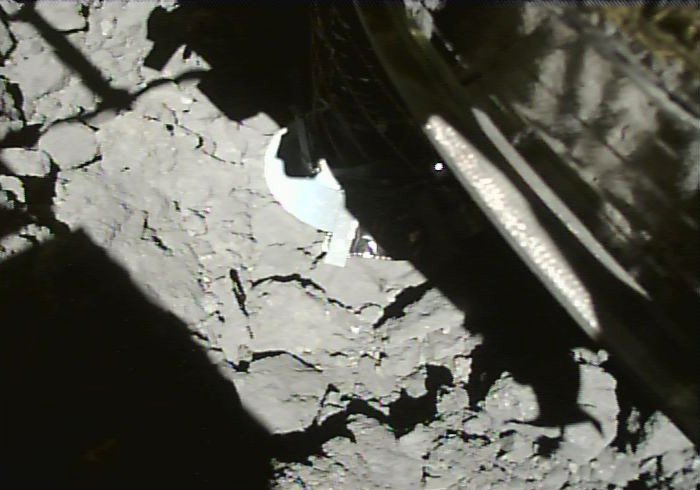Japan’s Hayabusa 2 spacecraft is now the first spacecraft to retrieve a subsurface sample from an asteroid. On July 11th, the spacecraft touched down for a second time on asteroid 162173 Ryugu. This time, the probe retrieved a sample from a crater it excavated with its impactor.
Continue reading “Hayabusa 2 is the First Spacecraft to Sample the Inside of an Asteroid”The Japanese asteroid-hunter had another photo opportunity when it dropped a target marker on asteroid Ryugu
The Japanese Aerospace Exploration Agency‘s (JAXA) has made some impressive feats in recent years. Roughly one year ago, and following in the footsteps of its predecessor, their Hayabusa2 spacecraft successfully rendezvoused with a Near-Earth Asteroid (NEA) – 162173 Ryugu. Since then, it has been collecting samples from the surface in the hopes of learning more about the formation and evolution of the Solar System.
Just a few months after the spacecraft created an artificial crater with an anti-tank warhead, the spacecraft has once again descended close to the asteroid to drop another target marker. This maker, a reflective sphere that contains the names of people who’ve supported the mission, will provide a visual guide as the spacecraft attempts to collect its second sample of material from the asteroid’s surface.
Continue reading “The Japanese asteroid-hunter had another photo opportunity when it dropped a target marker on asteroid Ryugu”Hayabusa1’s Samples of Itokawa Turned up Water That’s Very Similar to Earth’s Oceans
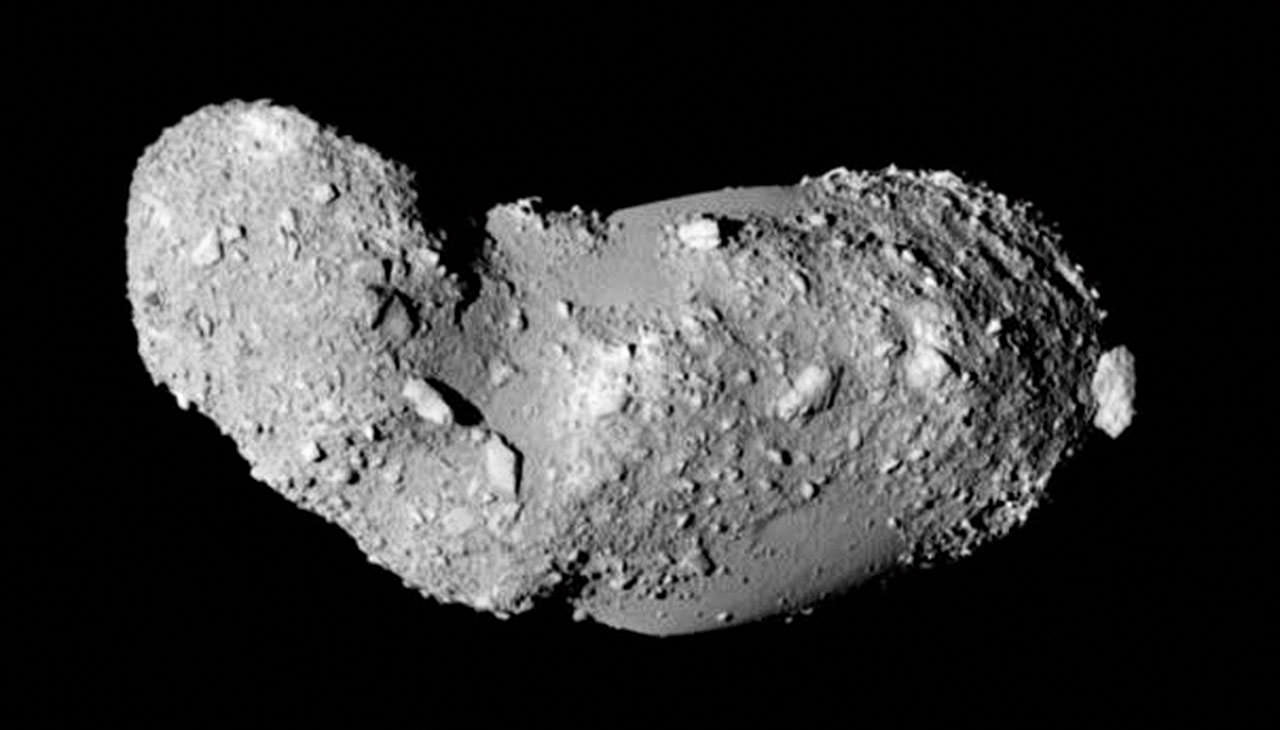
Right now, the Japanese Aerospace Exploration Agency‘s (JAXA)
Hayabusa2 spacecraft is busy exploring the asteroid 162173 Ryugu. Like it’s predecessor, this consists of a sample-return mission, where regolith from the asteroid’s surface will be brought back home for analysis. In addition to telling us more about the early Solar System, these studies are expected to shed light on the origin of Earth’s water (and maybe even life).
Meanwhile, scientists here at home have been busy examining the samples returned from 25143 Itokawa by the Hayabusa1 spacecraft. Thanks to a recent study by a pair of cosmochemists from Arizona State University (ASU), it is now known that this asteroid contained abundant amounts of water. From this, the team estimates that up to half the water on Earth could have come from asteroid and comet impacts billions of years ago.
Here’s the Video of Hayabusa2 Bombing Asteroid Ryugu
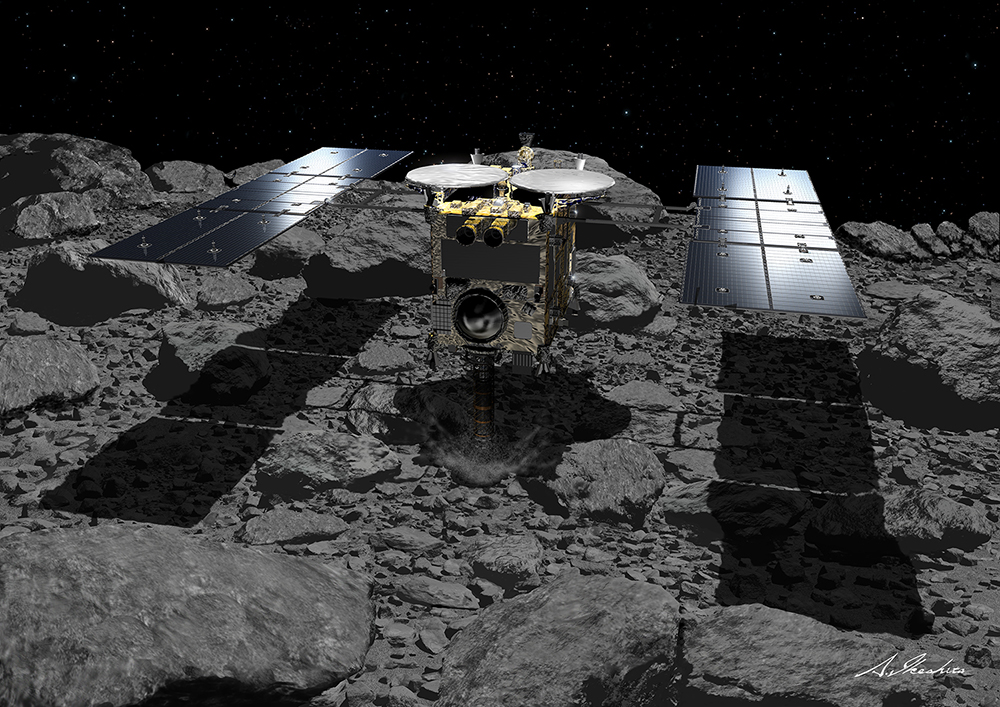
As part of its mission to explore the Near-Earth Asteroid (NEA)
162173 Ryugu, the Japan Aerospace Exploration Agency‘s (JAXA) Hayabusa2 spacecraft recently dropped a “bomb” on the asteroid’s surface. This explosive package, known as the Small Carry-on Impactor (SCI), was specifically designed to create a crater in the surface, thus exposing the interior for analysis.
The deployment of the SCI took place on April 5th, exactly six weeks after the spacecraft collected its first sample from the surface. Last Sunday, (April 21st, 2019), JAXA provided the video of the “bombing run” via the mission’s official twitter account. This was followed four days later by images of the crater that resulted, which revealed darker material from the interior that was now exposed to space.
Continue reading “Here’s the Video of Hayabusa2 Bombing Asteroid Ryugu”Hayabusa2 Fires an Anti-Tank Warhead at Asteroid Ryugu

Last week, the Japanese Aerospace Exploration Agency‘s (JAXA) dropped an explosive warhead on the surface of asteroid 162173 Ryugu. You might think this was the opening line of an entirely-readable science fiction novel, but it’s totally true. The operation began on April 4th, when the Hayabusa2 spacecraft sent its Small Carry-on Impactor (SCI) down to Ryugu’s surface and then detonated it to create a crater.
Continue reading “Hayabusa2 Fires an Anti-Tank Warhead at Asteroid Ryugu”Hayabusa2 Left a Dark Spot Where it Touched Down on Ryugu. Engineers Aren’t Sure Why
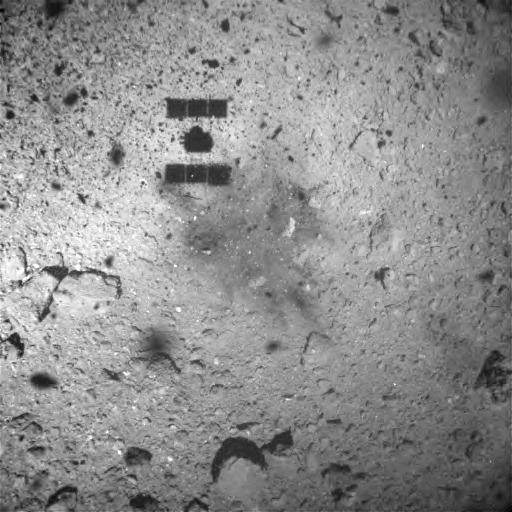
On June 27th, 2018, the Japanese Aerospace Exploration Agency‘s (JAXA) Hayabusa2 spacecraft rendezvoused with the asteroid 162173 Ryugu. Carrying on in the same tradition as its predecessor, Hayabusa2 recently conducted landing operations on the asteroid’s surface as part of the agency’s second sample-return mission from an asteroid.
The landing took place on February 22nd, 2019, after several weeks of careful preparations. One minute after successfully touching down with its “sampling horn” extended, the spacecraft lifted off again. That’s when mission controllers noticed something interesting about the patch of ground where Hayabusa2 had landed.
Read moreShout Out to Japan! Their Hayabusa2 Spacecraft has Collected its First Samples from Asteroid Ryugu
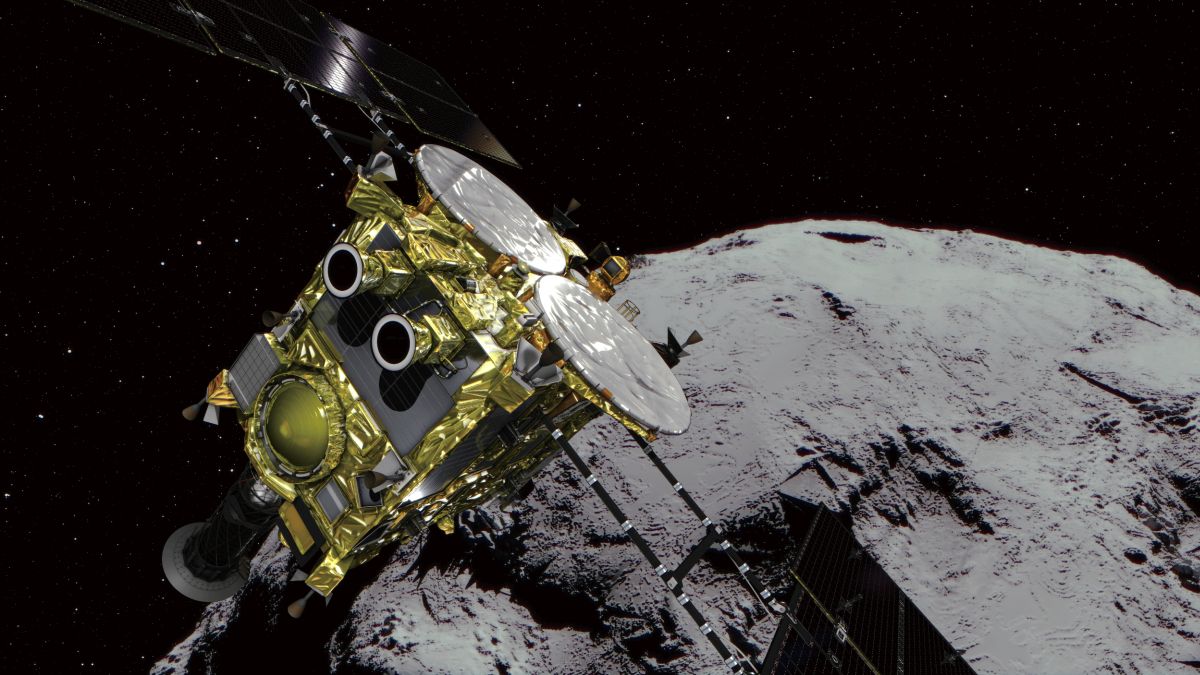
Japan’s Hayabusa2 spacecraft has completed an important part of its mission to asteroid Ryugu. The spacecraft descended to the surface of the asteroid to collect two samples with its sampling horn. We don’t know for sure if samples were successfully collected, but all indications are that the sampling mission went well.
Continue reading “Shout Out to Japan! Their Hayabusa2 Spacecraft has Collected its First Samples from Asteroid Ryugu”Japan’s Hayabusa2 is About to Shoot Up the Surface of Ryugu with Tiny Impactors so they can Collect a Sample
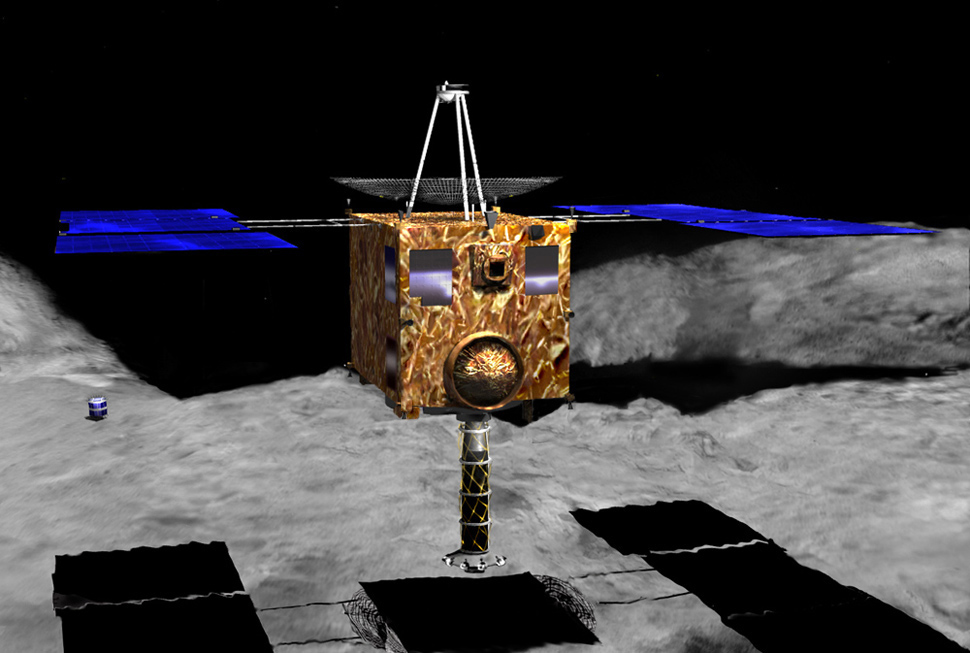
Japan’s Hayabusa2 mission is about to get down to business. After arriving at asteroid Ryugu at the end of June 2018, and dispatching its tiny rovers to the surface, the spacecraft is about to approach the surface of the asteroid and get some samples.
Continue reading “Japan’s Hayabusa2 is About to Shoot Up the Surface of Ryugu with Tiny Impactors so they can Collect a Sample”Giant Streak Structure Found in Venus’ Cloudtops
A team of researchers in Japan has discovered a gigantic streak structure in the cloud tops of Venus. The discovery is based on observations of Venus by the Japanese spacecraft Akatsuki. The findings were published in January 9th in the journal Nature Communications.
Venus is unlike any other planet in the Solar System. The entire planet is shrouded in thick clouds of sulfuric acid between altitudes of 45 km to 70 km. This thick shroud has prevented scientists from studying Earth’s so-called “sister planet” in detail. But Japanese researchers are making progress.
Continue reading “Giant Streak Structure Found in Venus’ Cloudtops”So Cool! Japanese Space Research Center will be Suspended Over a Moonlike Crater
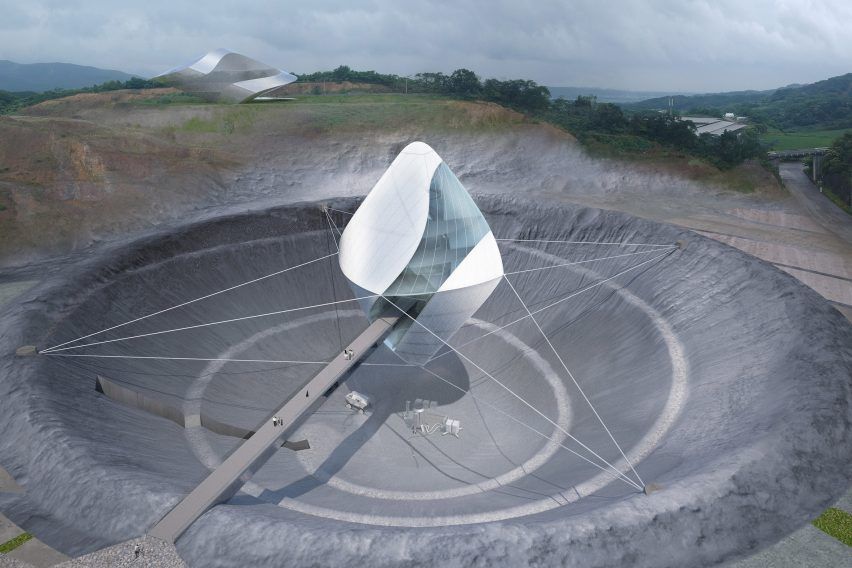
The architectural design behind Japan’s new space research center is mind-boggling. The futuristic building will incorporate elements of spacecraft design, which emphasize light weight and high functionality. The whole thing will be suspended over a man-made, Moon-like crater.
Continue reading “So Cool! Japanese Space Research Center will be Suspended Over a Moonlike Crater”

